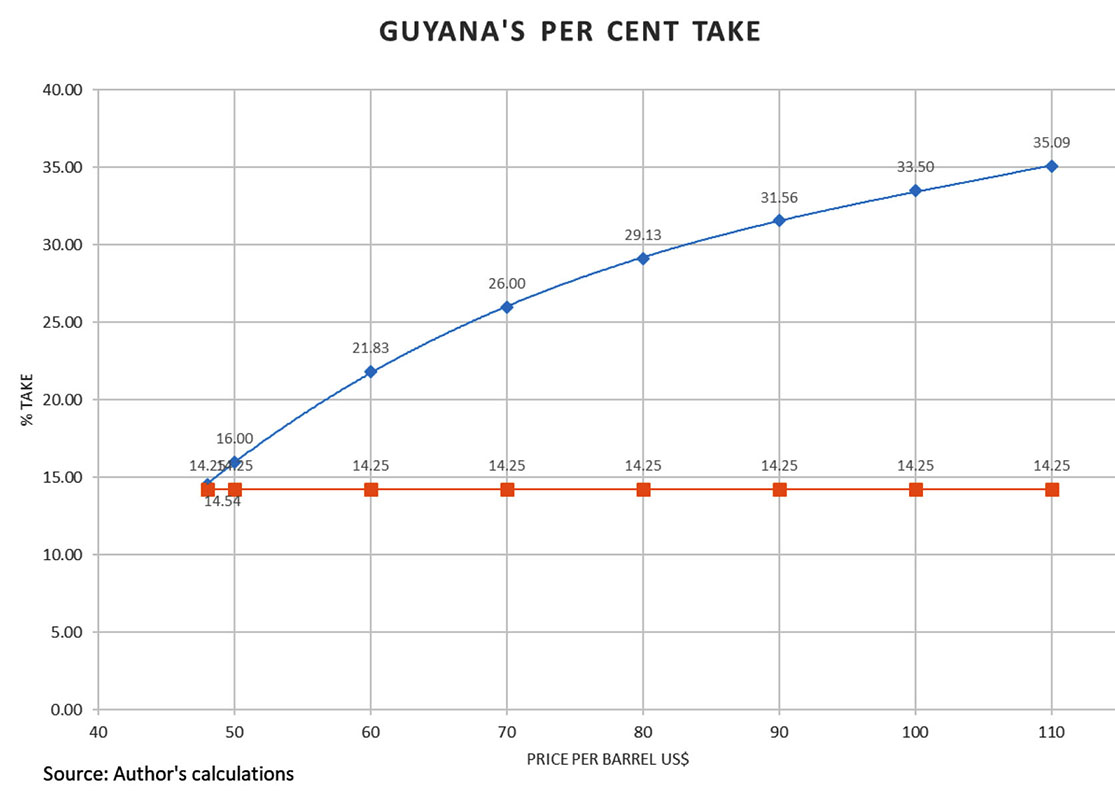
However, the contract does not specify a cut-off year for recovering the pre-production costs such as exploration, development and pre-contract expenses. Is the cut-off year 2024, 2025 or 2026? These costs will be added to the operating costs once production starts to come up with an overall average or unit cost of production. Students of cost accounting and microeconomics would think of this as an average fixed and variable cost of production. Since the time when these pre-production costs are fully recouped will determine the 50-50% profit share for government, it is surprising the government did not seek clearer language in the contract.
The price of oil is determined on the spot market and it changes each day. However, costs are much less flexible. Labour, transportation and other input costs are set by contract. They are sticky, while price per barrel is flexible. Therefore, it is possible for market price to fall below the overall unit cost, making profit oil negative. Therefore, the 75% cap of cost supposedly preserves a minimum point for Guyana.

